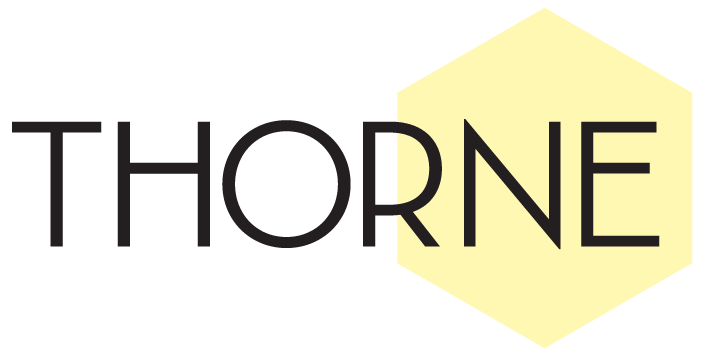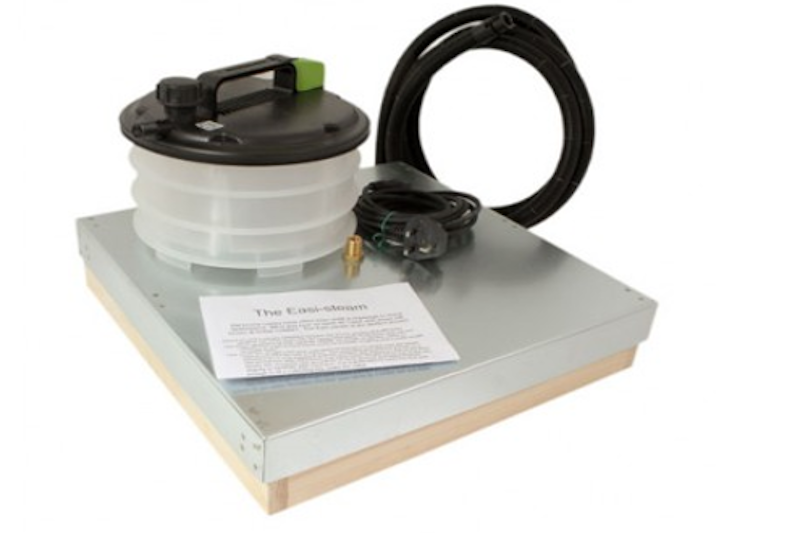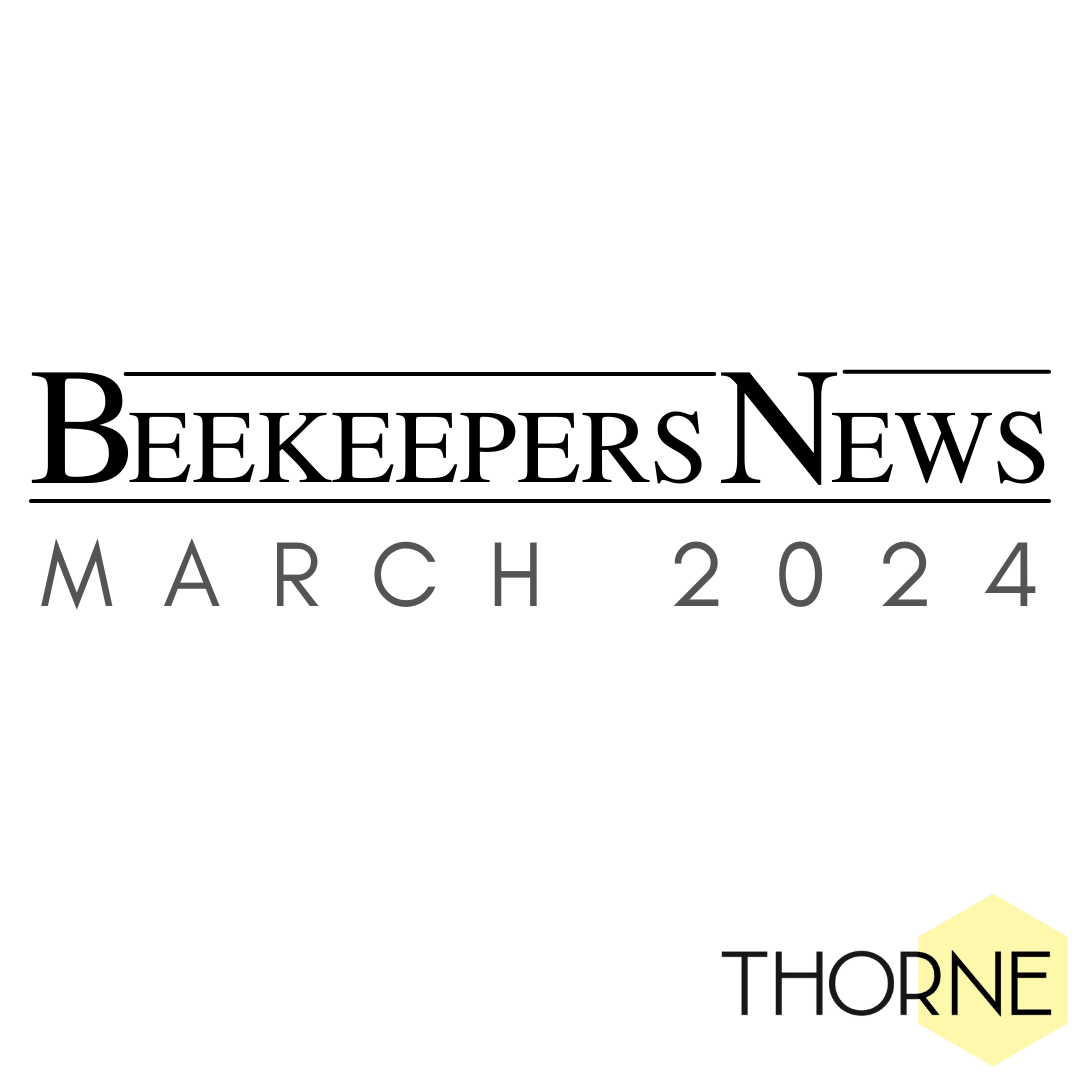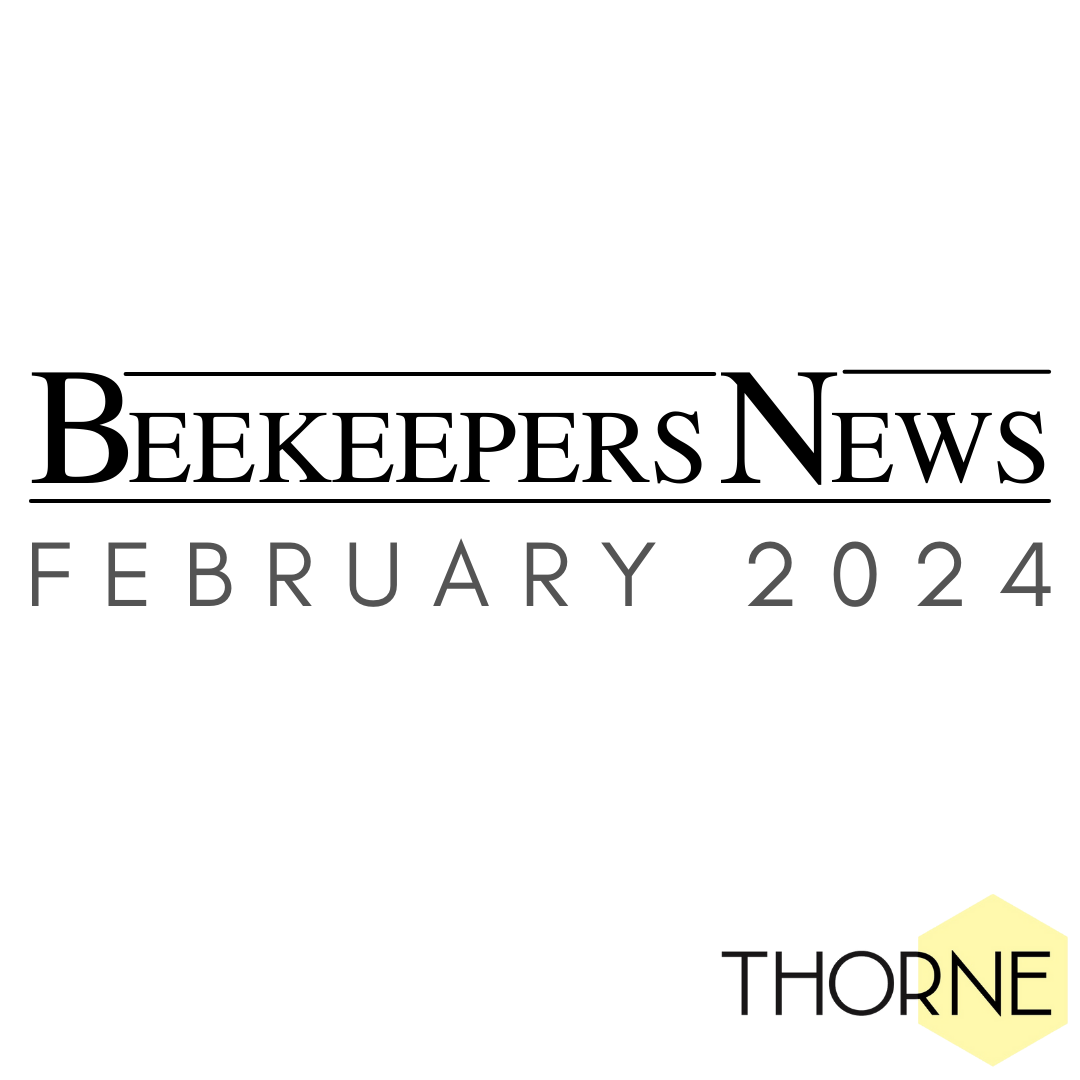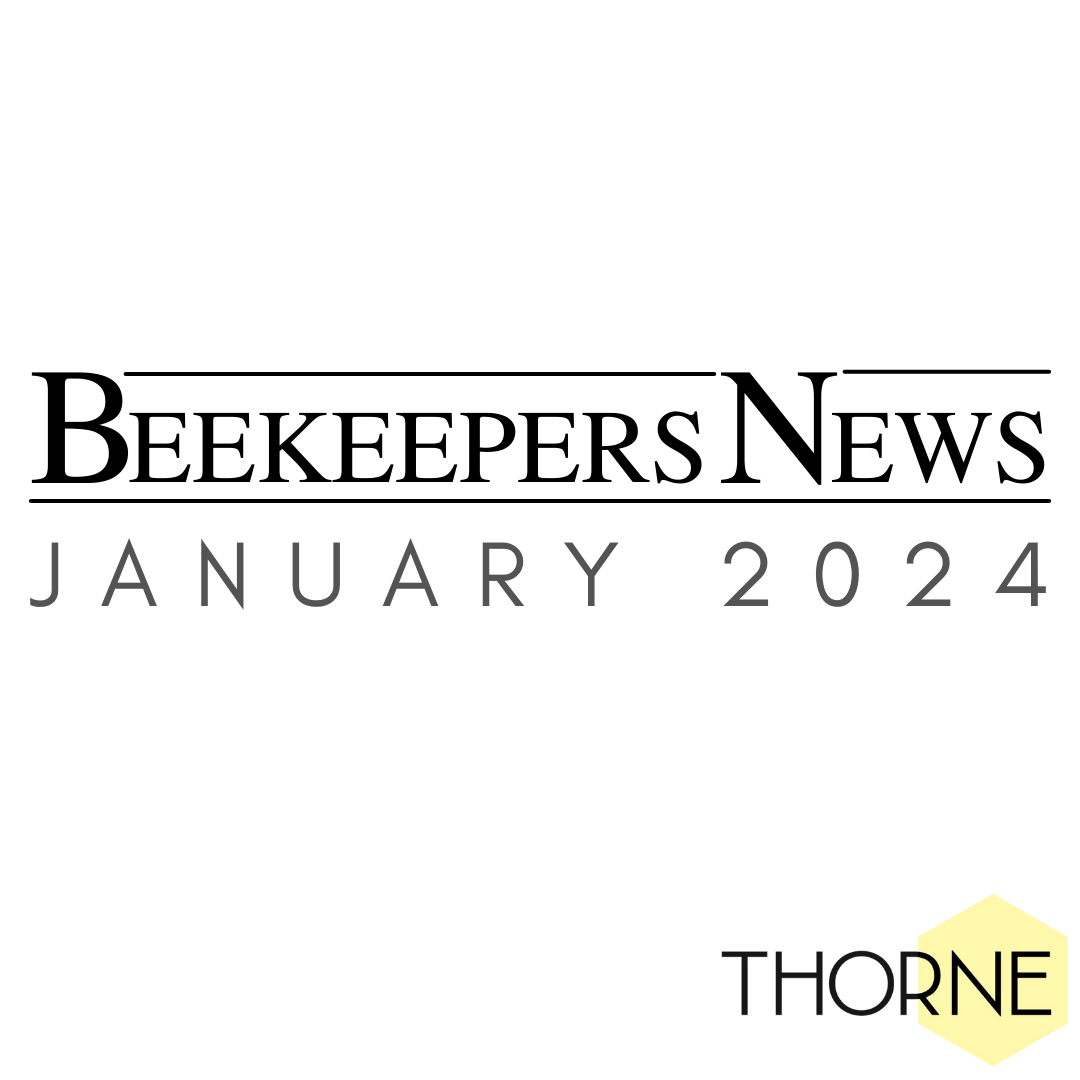The shortest month of the year gives us a chance to complete the Winter Sale orders and, of course, start preparing your orders and stock for collection at the Spring Shows. This time of year is always a challenge with four large conventions taking place over the period of only six weeks – it certainly is all hands on deck.
We also have an incredibly busy week every February completing our largest mail shot of the year – our new catalogue. If you haven’t got yours yet then please pick one up at one of the shows or drop us an email to sales@thorne.co.uk.
Equipment Focus........
Easi Steam – available in all sizes apart from WBC
This steam extractor is definitely a winner, especially as the ‘messy’ bit can be outside in the open. For more information visit our website at https://www.thorne.co.uk/honey-and-wax-processing/wax/wax-xtraction?product_id=330
Don’t take our word for it though. Below is an article first published in Bee Craft in May 2006.
“It is not often that a new piece of equipment comes onto the market that makes changes to beekeeping procedures.
We have recently purchased an Easy Steam from the 2006-2007 Thornes catalogue and in one week have processed about 200 brood frames, which have been in our accommodation over winter. New foundation is now being put in them ready for the spring inspection.
The frames were in poor condition and were taken out of our colonies last year. Some were used to light the bonfire on 5th November and the remainder were awaiting a similar fate.
For many years now, cleaning old frames has been a chore I can do without, but this piece of kit will now change all that.
On a recent visit to Denmark, we saw how comb is renewed annually and we find that the bees love new comb, laying in a good brood pattern and generally being in better health. Additionally, there will not be the build-up of chemicals and cleaning out old comb will help against the ravages of wax moth.”
Tom Robinson, York
Ask our Expert
Please email us at sales@thorne.co.uk if you have a question for our experts.
How do you recycle your wax? Our expert gives their opinion…….
Beeswax is a very valuable resource from your hive. It takes the bees (wax workers) about ten pounds of honey to produce a pound of wax. A pound of wax will draw out a supers worth of frames, and store twenty five to thirty pounds of honey (fantastic packaging!). So each pound of wax is a large amount of lost honey sales…
Beeswax has a Gel point of 64 degrees Centigrade (the temperature at which it starts to set), a dry heat of 80C will discolour and burn wax… so ideally you need to keep it above 64C but below 70C, a long slow gentle heat is best.
You can collect wax: From your inspections, brace comb between combs, on crown boards and debris on the floor. Old combs removed from the hive, old honey comb, or brood comb. Wild comb generated from swarms. Wax capping’s from honey extraction (very good quality). All of this can be collected and recycled. I tend to put all the wax into a plastic bag and freeze it for 24 hours. It then gets stored in the dark until I can get around to processing it. The freezing kills off any creepy crawlies in the wax (Specifically Wax moth).
Bulk frames can be melted in a solar wax extractor. It always amazes me the beautiful clean butter yellow wax you can get out of dirty old black brood frames (and the energy is free!).
You can use a Pratley tray or Steam wax extractor, or Easi-steam if you have one. Do be very careful if you are using a Bain Marie on a hob, or the gas, as wax is damaged by a dry heat of over 80 degrees centigrade, and if it boils it can ignite like a chip pan fire. I use a Burco, or Kochstar boiler set to 70C (thermostatically controlled, but still never left unattended!) half filled with rain water (Tap water contains chlorine and fluorine); Once the water is up to temperature put the wax in. All the stuff you don’t want is for the most part water soluble, bits of bee, pollen, traces of honey, wire, dirt, even old cocoons etc.… the wax will all melt and form a layer on top of the water. You may need to stir it occasionally to encourage it. If you are doing wax containing old nest you will have to dredge out the cocoons as they usually float.
Once you have a clear top to the wax and all is melted you shut off the power and leave over night to cool. In the morning you will find the block of wax has shrunk away from the sides of the container and is floating on the water. Take the wax out of the water and using a scraper hive tool to remove the boundary layer of debris on the underside of the block. Scrape back to fresh wax. You can always trade the wax back for new rolled foundation, or use it to make candles, polish or hand creams etc.
Bees for Development Update - Excellent news from Uganda!
Bees for Development has been working with Uganda’s beekeeping sector for over twenty years, working with many inspirational beekeepers and organisations.
TUNADO, (The Uganda National Apiculture Development Organisation) is Uganda’s national association - a membership organisation for the whole country. We heard this week the exciting news-that TUNADO is on the brink of securing their own dedicated premises for the organisation. As far as we know TUNADO are Africa’s first national-level beekeeping organisation to have their own dedicated home. This means that they will be able to grow and develop as an advice, information and advocacy service for all Uganda’s beekeepers.
TUNADO’s Director is working with the Agriculture Sector Skills Council to develop an accredited standard for beekeeper trainers in Uganda.
Bees for Development’s current focus is to support Mount Elgon Women’s’ Honey Hub – a marketing initiative for women beekeepers. There are so many challenges to selling honey, with price just one factor. Women beekeepers are challenged to travel far to market and too often lack confidence to negotiate with honey traders. The Women’s Honey Hub offers a local, safe, and trustworthy outlet where they know they will sell their honey at a fair price without hassle!
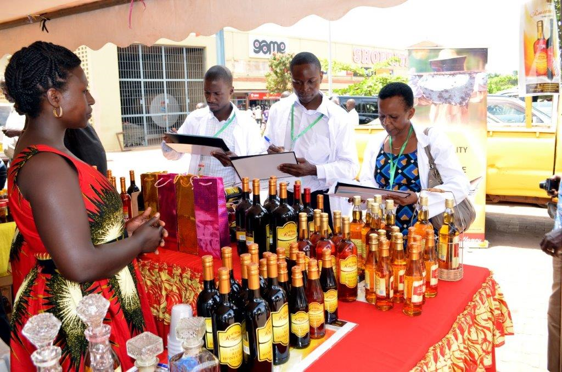
Judging honey wines at Uganda Honey Week, run by TUNADO
Upcoming Events
March is full of events. A chance to get stocked up before the beekeeping season starts in earnest. You can order for collection at any of the shows below. Also why not pick up a leaflet about the National Honey Show from our stand.
• Bee Tradex, Stoneleigh Park, Warwickshire – 4th March
• Ulster Beekeepers Convention, Greenmount Campus, Antrim – 10th and 11th March
• Welsh Beekeepers Convention, Builth Wells – 25th March
• BBKA Spring Convention, Harper Adams University, Newport – 7th and 8th April
National Honey Show News
As you’ll all know by now, we’re delighted to be returning to Sandown Park for the 2017 National Honey Show. Our brilliant main programme for this year includes lectures by Tom Seeley, Heather Mattila, Kim Flottum, Will Steynor and Peter Tomkins.
There will be the usual series of Bee Craft Lectures on the Friday, and a special focus on the early years of beekeeping for those thinking about taking up our absorbing, rewarding hobby, and those fairly new to the craft looking for tips, and answers to their questions or problems.
It’s a fantastic day out. In fact many come along for more than just one day. There’s always lots to do, to see, people to talk to, friends to meet up with, endless coffee to be lingered over, the staggering exhibition of honey, hive products and crafts; the vibrant trade hall and of course the lectures and workshops.
If you send your newsletters by email these days, you can include the link to the 2017 leaflet on our website at:
http://www.honeyshow.co.uk/files/2017/nhs-leaflet-2017.pdf
We look forward to a successful season and to seeing you (and your entries) at this year’s Show: Thursday 26th to Saturday 28th October 2017 at Sandown Park Race Course, Esher, Surrey.
